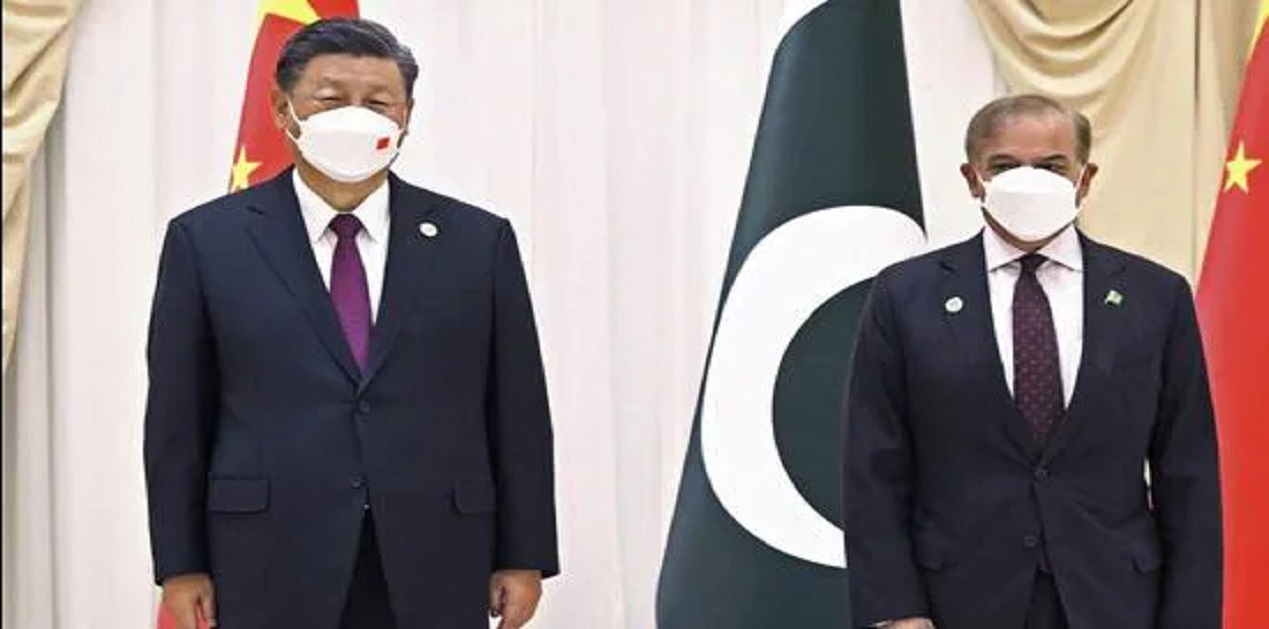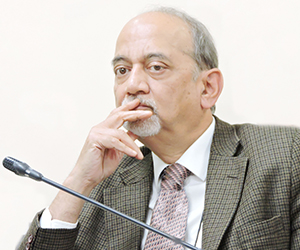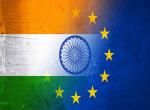Pakistan’s Prime Minister visited China on November 1-2, 2022. Shehbaz Sharif was amongst the first foreign leaders received by Xi Jin Ping soon after the latter got himself an unprecedented third term in office. This was projected in Pakistani media as a great honour for Shehbaz. The visit took place at a time when Pakistan is undergoing a major economic crisis and is desperate for foreign assistance. PM Sharif had earlier made a similar visit to Saudi Arabia. The country’s fractured polity makes it impossible to carry out tough reforms needed to salvage the economy. It coincided with Imran Khan’s Long March to Islamabad.
The visit has been projected in Pakistani media as a success story. Shehbaz Sharif is claimed ‘to have bagged $ 9 billion in Chinese assistance in terms sovereign loans, refinancing of old loans and an uptick in currency swap grants.’[1] It is difficult to say how much of this represents new commitments. There is no mention of these details in the joint statement.
The promise of Chinese assistance came with the demand that Pakistan improves the security of Chinese personnel working on the CPEC projects. In the past few years, there have been attacks on Chinese nationals and installations in Sindh, Balochistan, and Khyber-Pakhtunkhwa. Soon after he came to power, Shehbaz Sharif had to express regret to the Chinese over the killing of four Chinese nationals in Karachi, ‘and relations improved only after the government accepted Chinese help in taking out a BLA (Balochistan Liberation Army)-related outfit responsible for the attack.’[2] The incident points to the lack of Chinese faith in the Pakistani security forces to protect its nationals. According to Pakistani media, Beijing like IMF will soon start imposing ‘Prior Conditions’ for the release of funds. While IMF imposes economic terms, the Chinese ‘prior conditions’ would involve intrusive presence on the ground. Chinese companies prefer using Chinese manpower. This will lead to more friction over time.
Pakistan made an unequivocal commitment in the joint statement to ‘the one-China Policy and support on issues of Taiwan, South China Sea, Hong Kong, Xinjiang, and Tibet.’ This went beyond the formulation used in the Joint Statement issued at the end of Imran Khan’s visit to China in 2018. That statement mentioned Pakistan ‘unequivocally upholds the one-China policy and supports all efforts made by the Chinese government to realize national reunification’[3]The longer list of issues on which Pakistan pledged fealty to Chinese positions suggests that in the interim period since 2018 either Chinese policies and actions have become more contentious in its periphery or Pakistan has become more dependent on Chinese pleasure.
The China-Pakistan 2018 statement covered South Asia but did not contain any reference to the J&K issue. This time there was a more elaborate language. It included a reference to South Asia: ‘The two sides reiterated that a peaceful and prosperous South Asia is in the common interest of all parties.’ This was followed by a specific reference to the J&K issue, though there is nothing new in the formulation that China has used in the past also. The statement mentioned: ‘The Chinese side reiterated that the Kashmir issue was a dispute left from history that should be properly and peacefully resolved based on the UN Charter, relevant UN Security Council resolutions and bilateral agreements.[4]
On Afghanistan, the Joint Statement stated ‘..the two sides agreed that a peaceful, prosperous, interconnected and stable Afghanistan is fundamental to regional prosperity and progress.’ This is a neutral formulation and does not include any reference to the Taliban regime. The two sides instead, contented themselves with making a reference to Uzbekistan’s diplomatic on Afghanistan. However, there was a new element regarding the extension of CPEC to Afghanistan: ‘The two sides agreed to continue their humanitarian and economic assistance for the Afghan people and enhance development cooperation in Afghanistan, including through CPEC's extension to Afghanistan.’[5] It remains to be seen whether the above has any real significance at the moment. Pakistan’s relations with the Taliban regime remain strained with the latter accusing Pakistan of complicity in the US drone strike in Kabul in which the Al Qaeda leader Ayman al-Jawahiri was killed. China has not recognized the Taliban regime so far. If China is wary of the security situation within Pakistan, the situation inside Taliban-controlled Afghanistan must be more uncertain.
CPEC features prominently in the joint statement. 8 out of 47 paragraphs in the joint statement specifically referred to it. The important projects mentioned were: ML 1 project, Karachi Circular Railway, and Gwadar. However, none of these are new projects. Mainline 1 Railway project is a multi-year project for the construction of a 1680 km railway track from Karachi to Peshawar.[6] The scheme to restart Karachi Circular Railway has been pending for over two decades. ‘There are many skeptics, including those in the Sindh government, who believe the federal government is still not sincere in reviving the KCR, which has remained off track for well over 20 years.’[7] The article in Pakistani media said that private firms from China and Russia have shown interest. Apparently, the Chinese with deep pockets have got the lead. The project however would require heavy subsidy.
The Joint Statement expressed satisfaction on the completion of the Gwadar port, which is described as ‘the leading project of CPEC and an important node in cross-regional connectivity’. Both sides ‘agreed to speed up progress on other related projects of the Gwadar port and free zone.’[8] The affiliated projects include New Gwadar International Airport, the Eastbay Expressway, and the much-stalled Water Desalination Plant.[9] Gwadar is a strategic project for both China and Pakistan and will go through regardless of its economic benefits.
Another strategic project covered in China-Pakistan Joint Statement was Khunjerab, a mountain pass and entry point of CPEC into so-called Gilgit-Baltistan. ‘The two sides agreed to fully leverage overland trade and exchanges by upgrading facilities at Khunjerab border port and strengthening cooperation on epidemic containment and customs clearance in border areas.’ This was also the region worst affected by the virus brought along by truck traffic passing through this area.
According to an editorial in the leading Urdu language daily Jung of 4th November, Shehbaz Sharif assured the Chinese side that no obstacle will be allowed to come in the way of the Daimar Bhasa Dam.[10] An MOU for Chinese participation in the project has been signed. This is the largest project under CPEC with an outlay of more than $ 12 billion. Land acquisition for the project has already been completed. The project is bound to disturb the region’s delicate ecological and ethnic balance.
These infrastructure projects have little relevance to Pakistan’s immediate needs in the wake of massive floods and dislocation. The reports in Pakistani media mentioned 500 million Yuan ($ 70 million approximately) in assistance for the relief and rehabilitation of flood victims. This is a paltry sum considering Pakistan’s claim of damages to the tune of $ 30 billion. Pakistan’s immediate need is debt re-structuring. China is the largest bilateral lender to Pakistan. The Joint Statement is silent on the subject.
Endnotes :
[1]Business Recorder, Editorial, Beijing’s Prior Conditions, 6.11.2022
[2]Business Recorder, Editorial, Beijing’s Prior Conditions, 6.11. 2022
[3]China International Development Cooperation Agency, 4.11.2022
[4]China Daily, Joint Statement Between the People’s Republic of China and the Islamic Republic of Pakistan, 3.11.2022
[5]China Daily, Joint Statement Between the People’s Republic of China and the Islamic Republic of Pakistan, 3.11.2022
[6]www.zameen.com
[7]Dawn, Dream of Karachi Circular Railway revival inching towards reality’, Dawn, 17.10.2021
[8]China Daily, Joint Statement Between the People’s Republic of China and the Islamic Republic of Pakistan, 3.11.2022
[9]Business Recorder, On CPEC Revival, June 22, 2022
[10]Jang Editorial, Prime Minister’s China Visit’, November 4, 2022
(The paper is the author’s individual scholastic articulation. The author certifies that the article/paper is original in content, unpublished and it has not been submitted for publication/web upload elsewhere, and that the facts and figures quoted are duly referenced, as needed, and are believed to be correct). (The paper does not necessarily represent the organisational stance... More >>
Image Source: https://images.hindustantimes.com/img/2022/09/16/550x309/fc89b4f2-35c6-11ed-ae53-04438ab0d081_1663338178088.jpg











Post new comment